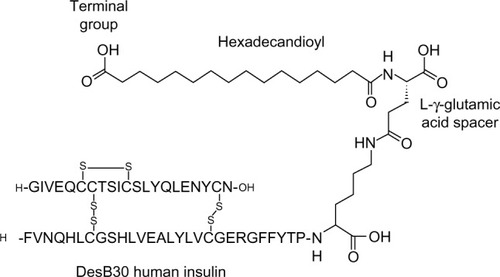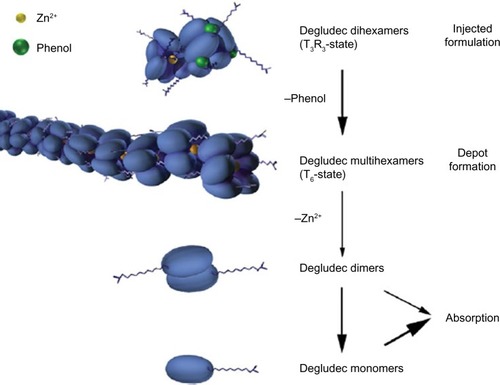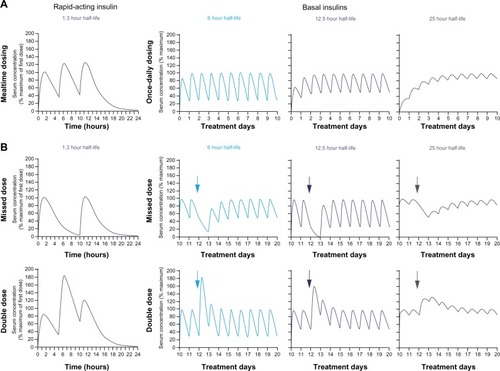Figures & data
Figure 1 Schematic representation of insulin degludec. DesB30 human insulin is acylated at the ε-amino group of LysineB29 with hexadecanoic acid via a γ-L-glutamic acid linker.

Figure 2 Schematic representation of the hypothesis for the mode of retarded absorption of insulin degludec.Citation1 Insulin degludec is injected subcutaneously as a zinc phenol formulation containing insulin degludec dihexamers in the T3R3 conformation. Rapid loss of phenol changes the degludec hexamers to T6 configuration and multihexamer chains form. With slow diffusion of zinc, these chains break down into dimers, which quickly dissociate into readily absorbed monomers.

Figure 3 Hypothetical examples of profiles of insulins with various half-lives.Citation52

Table 1 Hypoglycemia rates in clinical trials of insulin degludec
